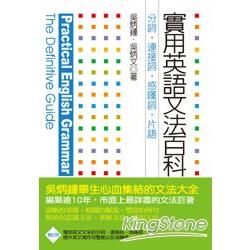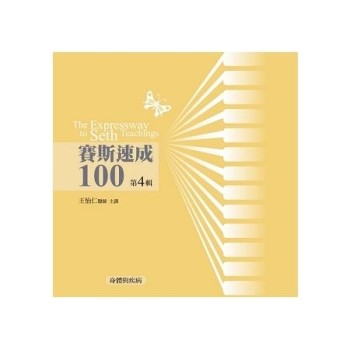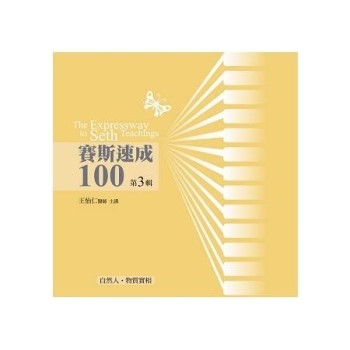前言
用法說明
第15章 分詞
1 概說
1.1 分詞的定義
1.2 分詞的種類
1.3 分詞片語(participial phrase)
2 分詞的時態
2.1 現在分詞的形式
2.2 現在分詞的時態
2.2.1 現在分詞主動式的簡單式
2.2.2 現在分詞主動式的完成式
2.2.3 現在分詞被動式
3 分詞在句中的作用
3.1 分詞作限定動詞的一部分
3.2 分詞作主詞補語
3.3 分詞作受詞補語
3.4 分詞作名詞或代名詞的修飾語
3.5 分詞作分詞構句
3.5.1 分詞構句意義上的主詞一般須是主要子句的主詞
3.5.2 可代替副詞子句的分詞構句
3.5.3 可代替合句中對等子句的分詞構句
3.5.4 分詞構句在句中的位置
3.5.5 由「連接詞+分詞片語」構成的分詞構句
3.5.6 不連接分詞
3.6 分詞用於獨立分詞構句
3.7 分詞在句中的其他作用
4 含有現在分詞的習慣用語
5 現在分詞與過去分詞的比較
6 現在分詞與動名詞的比較
6.1 現在分詞與動名詞作名詞前置修飾語時的區別
6.2 其他情形下現在分詞與動名詞在在功能或含義上的區別
7 現在分詞與原形動詞的比較
第16章 連接詞
1 概說
2 連接詞的分類
2.1 連接詞按型態結構分類
2.1.1 簡單連接詞(simple conjunction)
2.1.2 片語連接詞(phrasal conjunction)
2.1.3 相關連接詞(correlative conjunction)
2.1.4 分詞連接詞(participial conjunctions)
2.2 連接詞按句法功能分類
2.2.1 對等連接詞(coordinate conjunction)
2.2.2 從屬連接詞(subordinate conjunction)
3 對等連接詞的用法及分類
3.1 對等連接詞的用法
3.2 對等連接詞的分類
3.2.1 累積連接詞(copulative conjunctions)
3.2.2 選擇連接詞(alternative conjunctions)
3.2.3 反意連接詞(adversative conjunctions)
3.2.4 推論連接詞(illative conjunction)
3.2.5 解釋連接詞(explanatory conjunctions)
4 從屬連接詞的分類及用法
4.1 引導名詞子句的從屬連接詞
4.1.1 that, lest, but, but that, but what 的用法
4.1.1.1 that 的用法
4.1.1.2 lest 的用法
4.1.2 whether, if 的用法
4.1.3 who, whose, whom, what, which 作從屬連接詞的用法
4.1.4 when, where, why, how 作從屬連接詞的用法
4.1.5 what, whatever, whoever, whomever, whichever 等用以引導
名詞子句
4.2 引導形容詞子句的從屬連接詞
4.2.1 引導形容詞子句的關係代名詞作從屬連接詞用
4.2.1.2 準關係代名詞 as 作從屬連接詞的用法
4.2.2 引導形容詞子句的關係副詞作從屬連接詞
4.3 引導副詞子句的從屬連接詞
4.3.1 表時間的從屬連接詞
4.3.1.1 用以表示主要子句和副詞子句的動作同時發生的連接詞
4.3.1.8 用以表示主要子句動作開始時間的連接詞
4.3.2 表示地方的從屬連接詞
4.3.3 表示目的的從屬連接詞(subordinators denoting purpose)
4.3.4 表示條件的從屬連接詞(subordinator denoting condition)
4.3.5 表示原因的從屬連接詞
4.3.5.1 because, since, as, for 的用法
4.3.5.2 其他可表示「因為」、「由於」的從屬連接詞的用法
4.3.5.3 其他可表示「因為」、「既然」的從屬連接詞的用法
4.3.5.4 可表示「鑒於」、「考慮到」的從屬連接詞的用法
4.3.6 表示結果的從屬連接詞
4.3.7 表示讓步的從屬連接詞
4.3.7.1 單純表示讓步的從屬連接詞
4.3.7.2 表示假設兼讓步的從屬連接詞
4.3.8 表示方式的從屬連接詞
4.3.9 表示比較的從屬連接詞
4.3.9.1 as 的用法
4.3.9.2 than 的用法比
4.3.10表示反意的從屬連接詞
4.3.11 表示限制的從屬連接詞
4.3.12 表示比例的從屬連接詞
4.4 只可引導獨立構句的從屬連接詞 with 和 without
4.4.1由從屬連接詞 with 或 without 引導的獨立主格構句
4.4.2 由從屬連接詞 with 或 without 引導的獨立分詞構句
4.4.3 由從屬連接詞 with 或 without 引導的獨立不定詞構句
第17章 感歎詞
1 概說
1.1 感歎詞的定義
1.2 感歎詞的位置
1.3 感歎詞後標點符號的使用
2 感歎詞的類別
2.1 原始感歎詞 (primary interjection)
2.2 次生感歎詞(secondary interjection)
2.2.1 次位簡單感歎詞(simple secondary interjection)
2.2.1.1 源於名詞的次要簡單感歎詞
2.2.1.2 源於動詞的次要簡單感歎詞
2.2.1.3 源於形容詞的次要簡單感歎詞
2.2.1.4 源於副詞的次要簡單感歎詞
2.2.2 次要片語感歎詞(phrasal secondary interjection)
2.2.2.2 由「原形動詞+受詞」構成的次要片語感歎詞
2.2.2.3 由「介詞+受詞」構成的次要片語感歎詞
2.2.2.4 其他次要片語感歎詞
第18章 片語
1 概說
2 名詞片語(noun phrase)
3 形容詞片語(adjective phrase)
4 動詞片語(verb phrase)
5 不定詞片語(infinitive phrase)
6 動名詞片語(gerundial phrase)
7 分詞片語(participial phrase)
8 副詞片語(adverbial/adverb phrase)
9 介詞片語(prepositional phrase)
10 獨立片語(absolute phrase)
文法索引
參考書目











